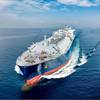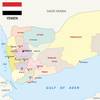U.S. Agriculture Needs Waterways Upgrades
U.S. farmers and agribusinesses, as well as the overall U.S. economy and balance of trade, depend upon and benefit from the inland waterways and its infrastructure, which provide the safest, lowest-cost and most environmentally sustainable and fuel-efficient way to move grain and other agricultural products.
The National Grain and Feed Association (NGFA) and Waterways Council, Inc. (WCI) have commended the U.S. Department of Agriculture (USDA) for releasing a significant new study that quantifies the cost-savings and competitive advantages that would accrue from investing in long-delayed improvements to inland waterways locks and dams on the Upper Mississippi and Illinois River system.
The study, entitled, Importance of Inland Waterways to U.S. Agriculture, addresses the critical connection between the inland waterways and the competitiveness of American agriculture in global markets.
Every dollar of waterways activity output results in $1.89 in additional U.S. economic activity directly related to the waterways.
Compared to the status quo, increasing investment in the inland waterways system by $6.3 billion over a 10-year period (through 2029) and $400 million per year thereafter through 2045 cumulatively would grow the waterways’ contribution to U.S. gross domestic product by 20 percent (to $64 billion) and increase waterways-related employment by 19 percent – to 472,000 jobs.
While the United States currently has a $5.35 per metric ton advantage over Brazil when shipping soybeans on the inland waterways system (from Davenport, Iowa, to Shanghai, China), aging U.S. waterways infrastructure will increase the price to the end-user, lower the demand for U.S. grains and soybeans, and make them less competitive in global markets.












